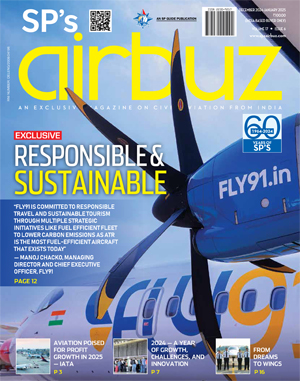Infrastructure - Sad State of Affairs

A journey through Arunachal Pradesh would reveal the poor state of its transportation infrastructure. Likewise, despite the fact that helicopters have been operating all over Arunachal Pradesh for several years, most helipads lack even the basic safety facilities.
On April 30, 2011, an Ecureuil AS350 B3 helicopter carrying the Chief Minister of Arunachal Pradesh, Dorjee Khandu, went missing near Tawang. For the next four days, the weather took a turn for the worse, severely hampering rescue efforts launched on an unprecedented scale. Nearly 3,000 personnel from the Army, Indo-Tibetan Border Police and other police organisations scoured the area on foot for the wreckage of the missing helicopter. The Indian Space Research Organisation (ISRO) too joined in with its satellites to pick up reflections from the crashed aircraft. The Indian Air Force (IAF) flew specially equipped Su-30MKI combat aircraft to detect infrared emissions from the wreckage. In addition, six IAF helicopters were deployed to visually locate the ill-fated helicopter. Unfortunately, the massive search and rescue operations yielded no results. Four days later, it was the Yak herders who found the remains of the crashed helicopter.
Meanwhile, student leaders of Arunachal Pradesh remarked that India had not been serious enough in the search for their Chief Minister and that had their state been in China, he would have been found sooner. They expressed regret that they were not a part of China. Fifty years after a war with China over the same territory, such remarks from the youth of the state of Arunachal Pradesh reflect the extent of alienation of the people of this border state and ought to be a cause for serious concern.
State of Infrastructure
A journey through Arunachal would reveal the poor state of its transportation infrastructure. It takes two days to travel by low capacity, poorly maintained roads from Tezpur to district headquarters Tawang, a distance of just 300 km. Otherwise too, overall, the connectivity by road within the state is totally inadequate. While there is not a single airport in Arunachal Pradesh at present, there are around 120 helipads, none of which is licensed. The Union Government allocates funds to the state for hiring of helicopters. The ill-fated helicopter carrying the Chief Minister was one such machine hired from Pawan Hans Helicopter Ltd (PHHL). Despite the fact that helicopters have been operating all over Arunachal Pradesh for several years, most helipads lack even the basic safety facilities. A fortnight prior to the accident in question, Tawang helipad was the location of perhaps the most serious helicopter accident in the history of Indian civil aviation. In this accident involving a Mi-172 helicopter operated by PHHL, 19 of the 23 persons onboard perished in the inferno that followed the crash. Most of the fatalities occurred due to the fact that the heliport did not have even the basic firefighting equipment and even a single person trained in rescue.
Licensing of Heliports/Helipads
Inquiry into the crash of the Mi-172 also discovered that there was no record available with the civil aviation authorities of the number of helipads in India. An unauthenticated estimate would place it at more than 1,500 of which many have been constructed by state governments as also a few by some private agencies. Interestingly, amongst all the helipads in the country, only nine are licensed and all of these are owned by private companies such as Reliance and ITC. The Civil Aviation Requirement (CAR) dealing with licensing of heliport/helipad is CAR, Section 4, Aerodrome Standards, Air Traffic Services, Series B, Part III, dated August 28, 2006. This runs into over 80 pages and details the basic requirements of a heliport. It is the responsibility of the agency owning the helipad/heliport to apply for licence. On receipt of application, the Directorate General of Civil Aviation (DGCA) carries out an inspection of the infrastructure. Many of the agencies owning heliports/helipads are unaware of the requirements of licensing. In some cases, they do not apply for licence deliberately as they are aware that their facility does not comply with the requirements.
Public-Private Partnership
It may not be financially possible for Arunachal Pradesh as well as most of the Northeastern states to comply with the stipulations of the CAR in a short time. One possible option to speed up matters is to adopt the public-private partnership model for construction of heliports not only in the Northeast region but all over the country. Such partnerships already exist in the construction or modernisation of airports. This concept certainly needs to be extended to heliports and helipads as well. We should also examine the possibility of adopting the public-public partnership model where more than one ministry is involved in the creation of infrastructure. Again, precedence exists in respect of airports. Some defence airports such as those at Agra, Pune, Chandigarh, Goa and Port Blair and PSU airports like Bangalore (HAL) cater to commercial civil aviation. In a similar manner, the Defence Ministry and the state governments of the North-east region could form partnerships to improve or create infrastructure for civil aviation.
Modification of Rules
The paucity of helipads in the North-east region is not going to be solved fully only through the public-private partnership route as there are other issues to contend with. The terrain in the North-east region is largely hilly. The International Civil Aviation Organisation (ICAO) and the CAR specify defined areas for safe landing in the event of an engine failure on take-off or on approach for a landing. Such specified areas are difficult to find and nominate in hilly terrain. The ICAO had anticipated such contingencies and had authorised local variations under the powers of the national civil aviation authority. However, for the authorisation of local variations, the national civil aviation authority is required to apply to the ICAO for a waiver or what is called “differences”. The US, a leader in civil aviation, has filed for a large number of such waivers. The Indian DGCA is somewhat tardy or diffident in this regard. Unless such differences are applied for and heliports suitably licensed, most of the helicopter operators would be violating the regulations in force. It is incorrect to promulgate rules and regulations that are not implementable by the operator.





